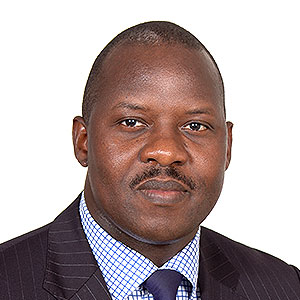Question: How can cities support and sustain thriving and meaningful civic engagement?
How can cities support and sustain thriving and meaningful civic engagement?
This discussion is now closed. Thank you for your participation.
Moderators:
-
 Claudio Torres Slum Upgrading Consultant, Housing and Slum Upgrading Branch. UN-Habitat
Claudio Torres Slum Upgrading Consultant, Housing and Slum Upgrading Branch. UN-Habitat -
 Pireh Otieno Human Settlements Officer, Urban Basic Services Branch - UN-Habitat
Pireh Otieno Human Settlements Officer, Urban Basic Services Branch - UN-Habitat -
 Kulwant Singh Regional Advisor - UN-Habitat
Kulwant Singh Regional Advisor - UN-Habitat -
 Marcus Mayr Urban Planner, Climate Change Planning Unit, UN-Habitat
Marcus Mayr Urban Planner, Climate Change Planning Unit, UN-Habitat -
 Edmundo Werna Head of Unit at Sectoral Policies Dept. ILO
Edmundo Werna Head of Unit at Sectoral Policies Dept. ILO
How can cities support and sustain thriving and meaningful civic engagement?
I am concerned that digital tools are being seen as the panacea to community disengagement. The amount of public space is contracting in our cities. New or regenerated public spaces are often highly mediated by security, commerce or ‘placemaking’ tools which tell the people what they should be doing with the space. Large scale political actions in public spaces across the world since 2010 has shown that communities need more than Twitter to debate new ideas and create new forms of interaction. So I suggest that, with our planning for urban spaces, we need to find a way to get out of the way and allow the people into spaces to meet, create, disagree and create new understandings.
1) By provision of adequate Security, energy for economic and social activities, water for health and hygiene, sufficient housing.
IFLA, the International Federation of Library Associations and Institutions sees an important role for civic and public spaces, including libraries, as an important means of supporting civic engagement. As stated in the Lyon Declaration on Access to Information and Development signed by over 580 organisations, access to information helps everyone in society to take part in decision-making and participate in an active and engaged civil society.
Cities can support civic engagement by supporting existing, funded institutions like libraries. For example, by including libraries as part of plans for regenerating cities, in the development of new cities, and as providers of eGovernment services, skills training, public space and ICT access.
Some examples of the roles that libraries have played in cities include:
Public libraries are an integral part of the city of Medellín, Colombia’s urban renewal strategy: Library Parks (Parques Biblioteca) Strategically located in some of the most disadvantaged communities in the periphery of Medellín, they have become centres for social development that address an identified need for more cultural and education space. The Library Parks are a series of public libraries that offer educational tools and programs to benefit the local communities, as well as providing a hub for further urban development and green projects.
Metropolitan libraries (libraries serving a city population of 400,000 or more persons) play a major role in the social, cultural and civic life in their cities. Data from a survey conducted by IFLA shows that nearly 80% of New York City residents are registered as users of the New York Public Library. Such libraries provide a huge diversity of services depending on the needs of their community, from voter registration, to migrant and language services, ICT programmes and eGovernment support. Libraries make Internet access available to the community at no or low cost. In many countries, public and educational libraries are the major or only providers of such access. Libraries support decision making and civic engagement by providing access to information, research and open data. Libraries support access to research, and the right to reuse research and data to create new knowledge.
Thank you, IFLA. And thank you for cross-posting; your input is relevant to both questions in this dialogue (replied to the other, and will cross-post this reply as well).
You have put across a very good point for deliberation in the shaping of the new urban agenda. Indeed, libraries play a major role in cities’ and communities’ social, cultural and civic life. They are also, in some places, the main source of services and becoming the space for engagement in public life and public decision-making processes. I have noted the example of Global Libraries programme, also for how organizations and coalitions like yours closely collaborate with governments, communities and the development community to make civic engagement real.
The urban renewal of Medellin indeed is a deeply relevant example. Thank you! Reports have been devoted to it, and a story in the Guardian in fact cites the library as a ‘”symbol of integration”. The Library Parks of Medellin are impressive for what they stand for and enable, and more so for how they were developed. As you noted, engagement in public decision-making processes is crucial, and this was built-in in the planning of the parks (which were strategically placed in disadvantaged communities). People engaged in raising what books and governance systems they want to see, even providing inputs on the architecture.
The Lyon Declaration is signficant to the A2I and right to information community. Thank you for noting is relevance also in the new urban agenda.
I would like to think that in the 21st century planners, activists and civic minded individuals are a bit more sensitive to making opportunities for engagement and participation accessible to persons with a variery of abilities and capacities. Best ways to making cities most accessible is to listen to the voices of those living with disabilities on a daily basis, creating a team of advisors representative of a variety of disabilities is a good place to start.
Thank you for your insightful comment, I agree that it is usually the marginal and more limited residents that are less involved in decision making pertaining their own lives. Would you have any suggestions from your own experience how to avoid these pitfalls? Possibly utilizing smart technologies in order to do so?
Opinion
The relationship between applying the HRB framework in the urban development sector and the progressive realization of the human right.
What has for long surprised and frankly annoyed me is that I fail to see the application of the HR framework to this sector understood and applied as calling for the country, region or district to –in an open and participatory way– sequentially do the following:
- Prepare a long term progressive realization plan that includes 10 years+ goals to be realized in the sector.*
- Define the specific processes that will eventually lead to achieve the same.
- Break down the application of these processes for what needs to be done the first and the second year of the plan.
- Participatorily set benchmarks for what needs to be achieved by the end of years 1 and 2.
- Arrange for public interest civil society to –at the end of year 1– monitor achievement and shortcomings of benchmarks for year 1.
- Based on the above findings –at the beginning of year 2– participatorily set the benchmarks for end of years 2 and 3 (modifying those originally set for year 2 as needed).
- At the end of year 2, civil society organizations again monitor achievements and shortcomings for that year.
- Based on the above findings –at the beginning of year 3– participatorily set the benchmarks for end of years 3 and 4 (modifying those originally set for years 3 as needed).
- At the end of year 3, civil society organizations again monitor achievements and shortcomings for that year.
- 10. At the end of year 3, after the monitoring, call for a participatory review of how far along the processes have come to reach the long term (10 years+) progressive realization goals originally set. Make adjustments as needed and set benchmarks for years 4 and 5.
- 11. Years 4, 5 and 6 and thereafter do the same as in years 1, 2 and 3.
12. Year 6 carry out a second general review as done at the end of year 3.
13. Continue with the same scheme until the completion of the 10 years+ period originally chosen.
This I see as the real serious approach to work by the letter and spirit of HR –and I have yet to see this considered, much less applied. I have written about this before, but have received little, if any, feedback. I here invite such feedback.
__________
*: The planning has to follow the prescribed steps of the HR-based planning process, i.e., start with a situation analysis, followed by a causal analysis that identifies immediate, underlying and basic causes of specific HR violations. This is followed by a capacity gap analysis that identifies the respective claim holders and duty bearers and the pattern of their relationships (pattern analysis). Next, the needs to develop the capacities of duty-bearers to meet their obligations and/or of claim-holders to claim their rights must be identified to come up with priority actions. To finish the plan, the processes to be followed are assessed and set into a program of action.
Claudio Schuftan
People’s Health Movement, Ho Chi Minh City

The migration perspective:
Rationale
Urban growth can only be sustainable if local governments successfully address the needs of their communities. As IOM’s “World Migration Report 2015: Migrants and Cities, New Partnerships to Manage Mobility” (2015, forthcoming) shows, most urban population growth will come from both international and internal migration, which will present a number of challenges and opportunities for urban community development. However, it is also noted that many cities are not adequately prepared for the increasing diversity among their growing population.
Engaging migrants through civic participation, as well as through increased opportunities within local labour markets will only be achieved by creating the necessary and systemic requirements to support the inclusion of migrants and recognizing their contributions to local communities. This is determined, to a large extent, by the capacity of a city to adapt to the needs of its residents.
The Opportunities
a) More representative and broadly supported public policies.
Migrants, often organized in local associations, are involved in civic engagement processes, through a broad range of channels and forms of formal and non-institutionalized participation. Given that migrants often play a key role in driving the growth of urban population, cities will function better if migrants can participate and engage in and contribute inputs and ideas to local governance processes to inform realistic and representative local policies.
b) Strengthening economic and social advantages of diversity in cities.
Cities need to change and adapt so as to recognize the benefits of diversity and promote tolerance and inclusion, in order to become better places in which to thrive and compete in the increasingly interconnected world.
c) Incentive for regularizing migration flows.
While governments and cities have a responsibility to facilitate integration and social inclusion, migrants should obtain proper documents to ensure their undocumented status does not put them at risk. Encouraging migrants to take part in civic processes can support them in gaining confidence in local governance and become empowered to engage with the authorities of their country of destination.
Key Actions
a) Facilitate newcomer access to local services, including integration support, through migrant resource centers
Access to relevant public and private services can be critical in facilitating newcomer inclusion and preventing marginalization of vulnerable populations. In this regard, digital solutions can play a key role in helping local authorities and other service providers to reach out and effectively support newly arriving residents, including providing information and training tools in various languages on migrant rights and responsibilities, intercultural orientation, job-related guidance, access to healthcare and education, legal counseling and facilitating referrals to local services and institutions. In this regard, migrant resource centers serve both migrants and local community authorities by providing services in countries of origin and destination.
b) Disseminate information on migrants’ rights and responsibilities
Migrants are often being discriminated against, and they are especially vulnerable to fraud, exploitation and other forms of abuses. Providing orientation and accurate information, including documentation requirements and processes, will make them aware of the risks and provide access to counsel. This may also make migrants more receptive to their civic responsibilities and roles, from legal requirements to the informal expectations people have of life in a new society.
c) Support a balanced discourse on migration.
Local authorities can help dispel myths and destructive stereotypes associated with migration by encouraging public debate on the overwhelmingly positive contributions of migrants in local communities, and by creating policies that allow and embrace orderly migration and promote inclusive and cohesive communities. This will allow migrants to be agents of development and engage with the local community in opportunities for cultural events and exchanges.
d) Use digital solutions to promote inclusiveness of civic participation processes at the local level, both through fostering participation in community events and processes, and allowing for representation of their views and interests in local decision-making.
Digital solutions can facilitate dialogue and enable more inclusive participation in diverse communities, in particular with respect to engaging underrepresented groups. Through social media, migrants can have their own messages conveyed in means that they themselves can frame, thereby participating in civic spaces in accordance with their cultural background. This also enables them to directly challenge any prevailing negative perceptions about them as individuals or as groups, as well as about migration in general.